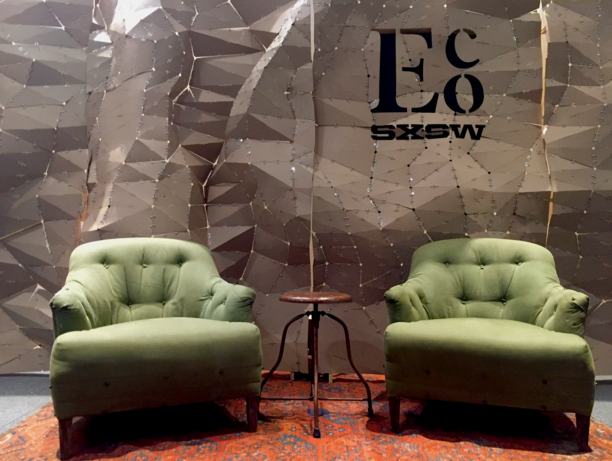
05 Oct The Future in 208 Square Feet
The future in affordable housing is big — but it might just fit on a flatbed. During part of a series of presentations during Day 1 of SXSW Eco’s takeover of Austin, Dr. Jeff Wilson of Huston-Tillotson University spoke with business partner and industrial designer Remy Labesque. Their discussion tackled one of the greatest issues facing both city planners and residents of the world’s major cities – making urban housing available and affordable.
Known locally around Austin as “Professor Dumpster,” Wilson gained his fame during his year-long residency in a 33 square foot dumpster at Huston-Tillotson. Barreling beyond the extremes of efficiency housing, Wilson redefined his interpretation of “home” and sought to spur others to question the true essentials of a living space. But beyond the dumpster-stay itself, the local professor hoped to shed light on an increasingly prevalent issue facing city dwellers – finding housing that meets the needs of both city tenants and their wallets. “Mass urbanization,” as Wilson calls it, is at the heart of a medley of issues facing metropolitan areas. “Traffic, congestion, increased commute” are all symptoms of a greater issue rooted in people’s inability to work where they live. And even when housing can be found, it can easily become a day to day struggle to meet the increasing financial burden of rent. Professor Wilson cited the instance of a Bay-area family who rented a tent in their backyard for an astonishing $899 per month. With so little room to grow within the citified sprawl, what is the future of metropolitan dwelling?
According to Wilson – it’s a square.

Speaking with business partner and industrial designer Remy Labesque, Wilson presented his version of the future in urban lodging – Kasita. Modular in design, Kasita brings all our preconceived elements of the home into a modest and sustainable 208 square feet. To Wilson, the square represents the most universally implementable shape. Calling the squarish design “the most efficient use of space,” Wilson believes his collaborative design with Labesque can be easily implemented within even the most crowded of downtown areas. With an emphasis on comfort and atmosphere, their design takes the best of domestic life and enhances it with the latest in architectural technologies. Nicknaming their solution to urban housing the “rack and stack” method, the individual housing modules will be easily detachable, allowing for easy and affordable movement between urban centers around the nation.
And the best part? Affordability. Calling their design “a beautiful home for the price of a car payment,” Wilson estimates that by 2016 the Kasita design could be available in Austin for just $600 per month. At half the market rate of a studio, such opportunities for housing hold immeasurable potential for cities like Austin. Yet with such easy implementation and a housing crisis that reaches far beyond Austin, Wilson and Labesque have no intention of limiting themselves to the 512. In fact, Kasita’s future ambitions stretch to cities as far as Denver, New York City, Los Angeles, Washington D.C., and even overseas to Stockholm.
While the fight for affordable housing grows increasingly desperate, solutions such as Wilson and Labesque’s offer attainable and economical solutions. With technology and automation built into every facet of the home, Kasita will take the idea of efficiency living and microhousing into the future.
For more information about Kasita housing or Wilson’s year-long stay in a dumpster, please visit the project’s website at Kasita.com.



No Comments